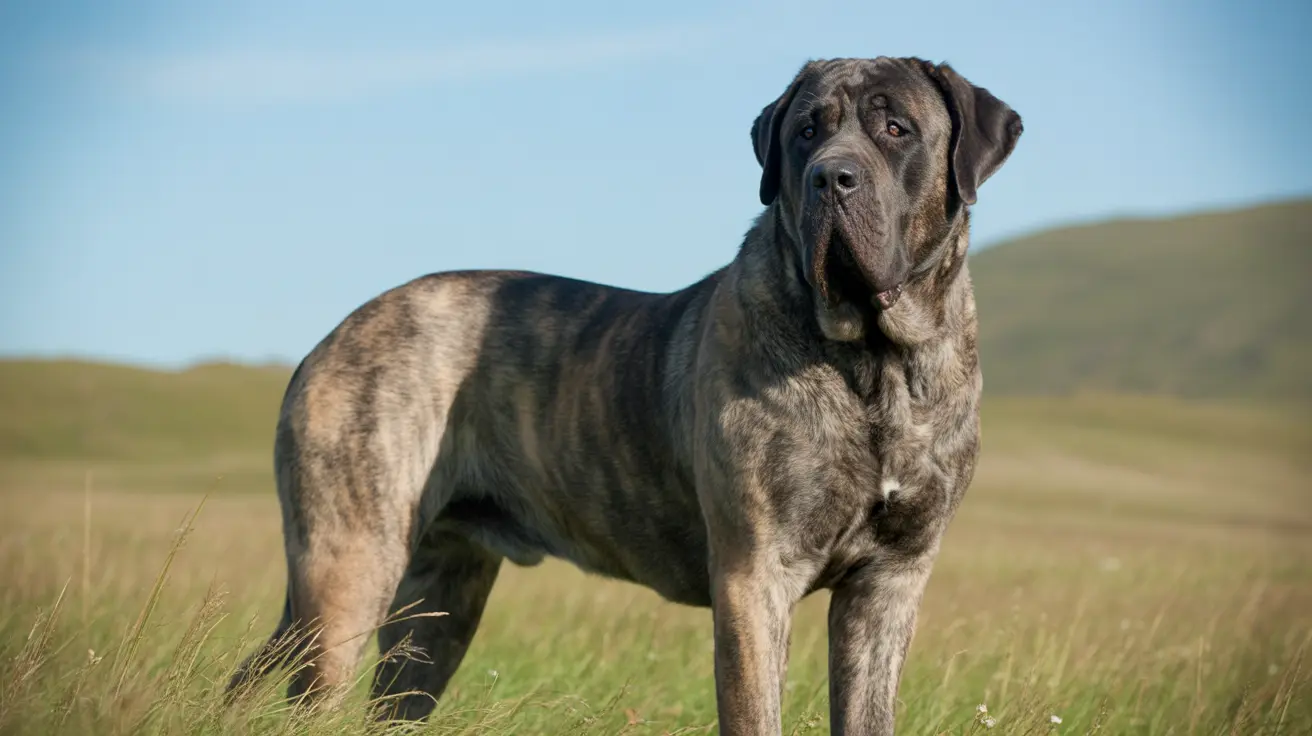The Spanish Mastiff stands as one of the most impressive guardian breeds, combining a commanding presence with a gentle soul. This ancient breed, developed in Spain's rugged landscapes, has evolved from a fierce protector of livestock to a loyal family companion while maintaining its protective instincts and dignified demeanor.
In this comprehensive guide, we'll explore everything you need to know about the Spanish Mastiff, from its distinctive physical characteristics to essential care requirements and health considerations.
Physical Characteristics and Appearance
The Spanish Mastiff is a giant breed that commands attention with its impressive stature. Males typically stand 28-33 inches tall at the withers and weigh between 110-150 pounds, while females are slightly smaller but still substantial at 26 inches minimum and 88-132 pounds.
Their most striking features include a massive head with a serious, vigilant expression, small eyes that convey wisdom, and triangular drop ears. The breed's coat comes in various colors, including fawn, brindle, black, and wolf-colored variations, with a dense texture that provides protection against various weather conditions.
Temperament and Personality Traits
Despite their imposing size, Spanish Mastiffs are known for their calm and dignified nature. These gentle giants display remarkable patience, especially with family members and children, while maintaining their natural protective instincts.
Their protective nature manifests through their deep, resonant bark – a characteristic that served them well in their historical role as livestock guardians. While generally peaceful, they remain vigilant and won't hesitate to defend their family when they perceive genuine threats.
Training and Socialization Requirements
Early socialization is crucial for Spanish Mastiffs to develop into well-adjusted adults. These intelligent but independent dogs require consistent, firm, yet gentle training methods. Their stubborn streak means that training sessions should be engaging and varied to maintain their interest.
Positive reinforcement techniques work best, particularly when food motivation is used appropriately. However, their independent nature means they may not always be eager to please, requiring patience and persistence from their owners.
Health Considerations and Care
Spanish Mastiffs are generally healthy dogs but are prone to several breed-specific health issues. Key concerns include bloat (GDV), hip dysplasia, and dilated cardiomyopathy. Regular veterinary check-ups and preventive care are essential for maintaining their health.
Their exercise needs are moderate – daily walks and access to a secure yard typically suffice. However, their size means they require ample space and aren't well-suited to apartment living.
Living with a Spanish Mastiff
These dogs thrive in homes with adequate space and secure boundaries. Their protective nature makes them excellent guardians, but potential owners should consider their significant food requirements and higher veterinary costs associated with large breeds.
While they form strong bonds with their families, Spanish Mastiffs maintain an independent streak that can challenge first-time dog owners. Their success as family pets largely depends on proper training, socialization, and understanding their unique needs.
Frequently Asked Questions
How do I socialize my Spanish Mastiff puppy to prevent aggression towards other dogs?
Start socialization early with controlled introductions to friendly, calm dogs. Use positive reinforcement and gradually expose your puppy to various dogs in different settings. Always supervise interactions and maintain a calm environment to help your puppy develop positive associations.
What are the best practices for training a Spanish Mastiff, considering their independent nature?
Use consistent, positive reinforcement methods with high-value treats. Keep training sessions short and engaging to prevent boredom. Establish clear boundaries while respecting their independent nature, and always maintain patience and consistency in your approach.
Why are Spanish Mastiffs prone to bloat and gastric dilatation-volvulus, and how can I prevent these conditions?
Large, deep-chested breeds are particularly susceptible to bloat. Prevent it by feeding smaller meals throughout the day, avoiding exercise around mealtimes, and considering preventive gastropexy during spay/neuter surgery. Always monitor for signs of distress after meals.
Can Spanish Mastiffs thrive in urban environments, or are they better suited for rural settings?
Spanish Mastiffs are better suited to rural or suburban environments with ample space. Their size, protective nature, and powerful bark make urban living challenging. They need secure yards and sufficient space to move comfortably.
How do I manage the potential health issues of a Spanish Mastiff, such as hip dysplasia and dilated cardiomyopathy?
Regular veterinary check-ups, including cardiac screenings and hip evaluations, are essential. Maintain a healthy weight, provide appropriate exercise, and consider joint supplements. Early detection and management of these conditions can significantly improve quality of life.






